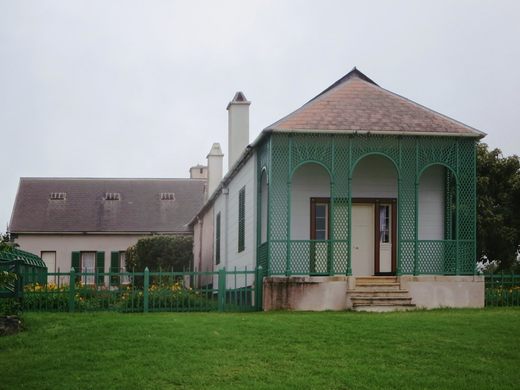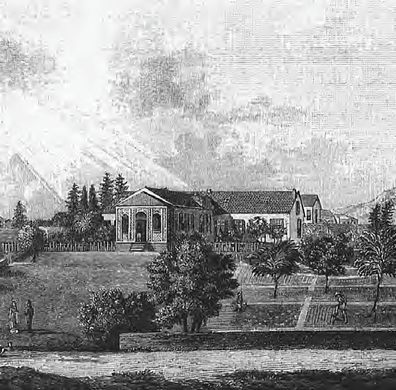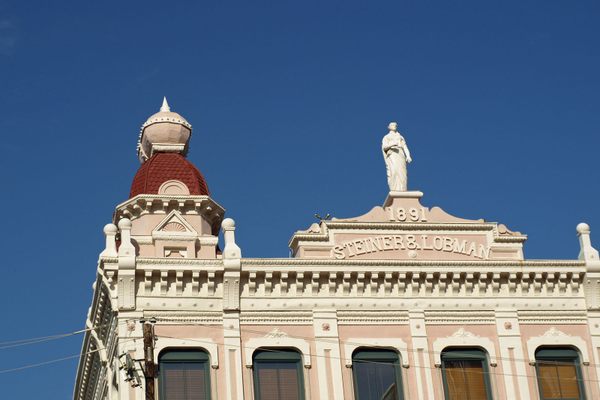Longwood House
Napoleon’s home in exile, decorated with poisonous wallpaper.
As he lay on his deathbed on the remote volcanic island of St. Helena, Napoleon Bonaparte had no shortage of enemies. From his political adversaries to the house staff he had angered through his constant small provocations to the British governor of the Island whose insistence on petty rules kept him and the deposed emperor in a constant state of mutual irritation, there were plenty of people who wanted Napoleon dead. But is it possible that he was killed not by his enemies but by the very house in which he was exiled?
Napoleon had been banished to St. Helena by the British. He lived out his final years here at Longwood House writing his memoirs, complaining of the damp, and bitching about the quality of his living conditions and keepers. The house had been selected specifically for its remoteness on this already incredibly remote island, because of Napoleon’s reputation for coercion and escape. If there was one thing his custodian, Hudson Lowe, was not going to allow, it was an escape attempt on his watch.
St. Helena is almost impossibly remote, a tiny island located more than 1,200 miles from the nearest landmass. This made it an extremely popular place of exile for difficult people. And no one was more difficult than Napoleon Bonaparte.
While there were many escape plots during Napoleon’s time on St. Helena—mostly unrealistic and complicated affairs (submarines!) dreamed up by far away supporters—none came to fruition. By February 1821, the emperor began to show signs of declining health. By May 5, he was dead.
The official cause of death, according to the autopsy done on St. Helena, was stomach cancer. Since then wild theories speculating on assassination and accidental death have abounded, including, most famously, the incredible possibility of Napoleon’s “Poisoning by Wallpaper.”
It seems that the combination of the damp environment, Napoleon’s tendency to seclude himself indoors to avoid the watchful gaze of his keepers, and Longwood House’s chic green wallpaper may have been a deadly combination.
The star-patterned wallpaper seen in depictions of Napoleon on his deathbed turns out to have included the popular color known as “Sheele’s Green”—a dye used to produce a cheerful bright green color, and, as it turns out, also to off-gas deadly arsenic vapors when damp. Modern tests of strands of Napoleon’s hair showed it to have suspiciously elevated levels of arsenic.
As exciting as that possibility sounded, recent studies have shown that it is almost certainly untrue, as other tests showed that pretty much everyone’s hair from the era showed elevated levels of arsenic due to regular exposure to all manner of toxic items common in the 18th and 19th centuries. Although we may never be certain, the much less glamorous stomach cancer is probably what actually did him in.
Today Longwood House and Napoleon’s original gravesite are maintained as historic sites by the French government. Much of Longwood House has been reconstructed due to the long-term effects of that deadly damp and the predations of termites. The arsenic wallpaper has long since been replaced with a replica.

















Follow us on Twitter to get the latest on the world's hidden wonders.
Like us on Facebook to get the latest on the world's hidden wonders.
Follow us on Twitter Like us on Facebook